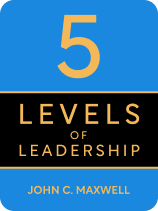

This article is an excerpt from the Shortform book guide to "The 5 Levels of Leadership" by John C. Maxwell. Shortform has the world's best summaries and analyses of books you should be reading.
Like this article? Sign up for a free trial here .
What is leadership team development? What can you, as a leader, do to help your team members reach their own leadership potential?
Leadership team development is the process of expanding the skill set of individuals to prepare them for leadership roles within the organization.
Here are some leadership team development tips to consider.
Leadership Team Development
Having reached the pinnacle of your own leadership journey, you should now focus on helping others in your team move up the leadership ladder. You can do this by using “crucible moments,” which can be personal experiences that taught you important lessons and molded you into the leader that you are, as well as situations you create for emerging leaders to help them reach their potential. Answer the following questions to help you with leadership team development in your organization:
1. What leadership lessons do you want them to learn? Come up with a list of characteristics that any good leader should have. Examples are integrity, vision, servanthood, problem-solving ability, and passion. From there, create situations where your leaders-in-training can gain experience in those areas. Look at the challenges your organization currently faces and see them as opportunities for leaders to earn another badge.
2. What are the crucible moments in their lives? Crucible moments can come from all different kinds of experiences. In an article in the MIT Sloan Management Review, Robert J. Thomas cites three kinds of crucibles: reversal (death, divorce), suspension (unemployment, suspension), and new territory (new roles, overseas assignments). You can turn these crucibles into teachable moments by helping leaders find value in them and discern what these experiences taught them.
3. What are your own crucible moments? Go through your own formative experiences and identify what they taught you. Maxwell classifies them as:
- Ground Breakers—experiences that showed you a quality you needed to develop
- Ice Breakers—experiences that propelled you forward after you were stuck
- Cloud Breakers—experiences that showed you potential
- Example: When Maxwell was a pastor of a small church, he visited bigger churches and spoke with leaders, which gave him a whole new perspective outside of his own experience.
- Tie Breakers—experiences that brought you to a crossroads
- Heart Breakers—experiences that led you to re-evaluate and reflect
- Example: Maxwell had a heart attack, which made him pay attention to his health and changed the way he lived his life.
- Record Breakers—big wins that pushed you beyond your limits
The purpose is to share these crucible moments with potential leaders so that they may be inspired. They’re behind you on the journey, so use your years of experience to help move them forward.
4. Are there resources you can tap to help them grow? As a Level 5 leader, you have access to speakers, organizations, and other resources that can aid potential leaders in their development. Use your resources for their benefit.
Your Development To-Do List
Here are some practical tips so that you can be your best at Level 5:
- Stay teachable. Only by being humble will you be open to continuous learning. Every day, remind yourself to remain teachable and look for other leaders from whom you can learn.
- Stay focused. Just as you’ve learned to identify your team members’ strengths and how to maximize them, so too should you stay in tune with your own strengths and the things that only you can do. Reflect on them and think about how you can use them to the organization’s greatest advantage.
- Form your inner circle. Determine who you want to have in your inner circle and invite them in. Have a give-and-take relationship with them, fostering an atmosphere of trust and honesty. Work with them, help each other, and keep each other grounded.
- Create an environment that breeds leaders. How can you make your organization an incubator for leadership? Find ways to make it conducive to developing leaders then make it an integral part of their responsibilities to develop other leaders.
- Make room for others at the top. Check your organizational chart and your leaders near the top. If there is no space for them to advance, they might eventually leave and you will have lost some of your most talented people. Find ways to create opportunities for expansion or initiatives that would require additional leaders to give them the chance to advance.
- Mentor your top leaders one-on-one. Go through your list of strong leaders and make sure to set aside time for them each week. Use crucible moments as teaching tools.
- Focus on your potential successors. Start thinking about your succession plan. If you have some people in mind who can eventually take over, focus your efforts on them. If not, start developing those with potential to turn into high-level leaders.
- Think about your legacy. How would you like to be remembered? What can you start doing now so that you can leave this legacy behind?
- Use the pinnacle as a platform for good. Given the extent of your influence, think about how you can use it to benefit others beyond your organization.

———End of Preview———
Like what you just read? Read the rest of the world's best book summary and analysis of John C. Maxwell's "The 5 Levels of Leadership" at Shortform .
Here's what you'll find in our full The 5 Levels of Leadership summary :
- How to go from being a leader in title only to a true leader
- How to create a legacy as a leader
- Why you have to help others move up after you've evolved as a leader






